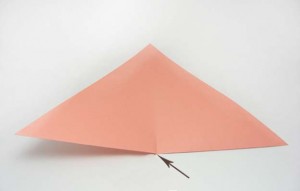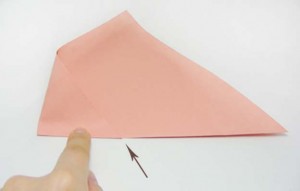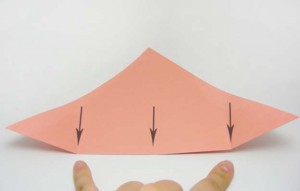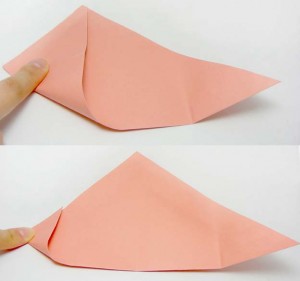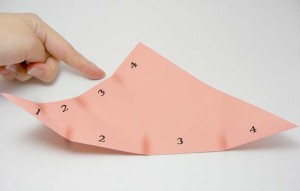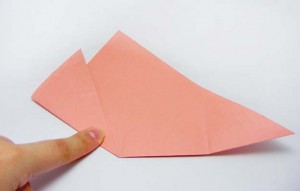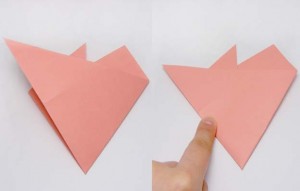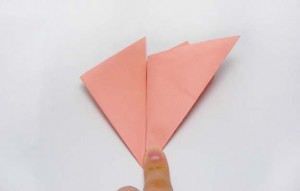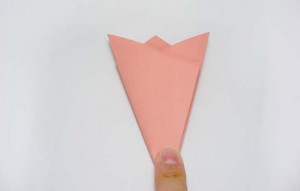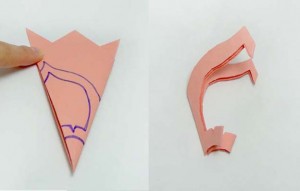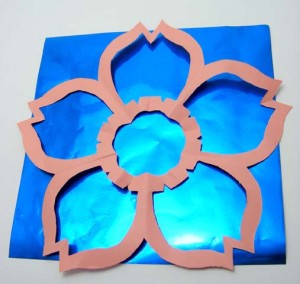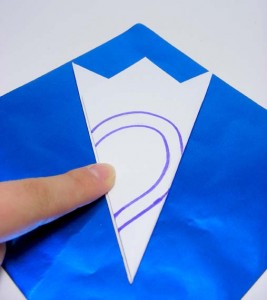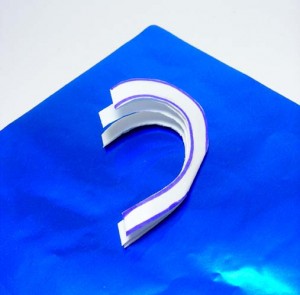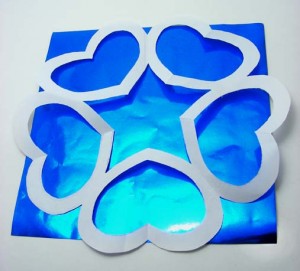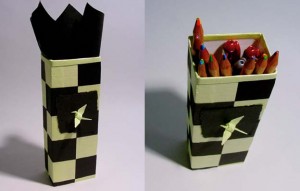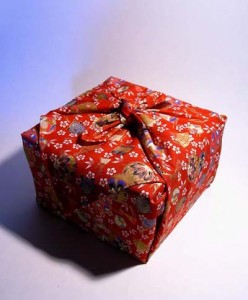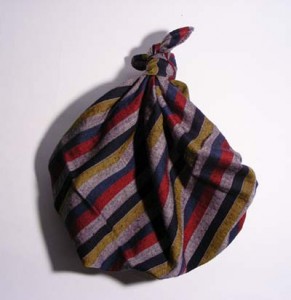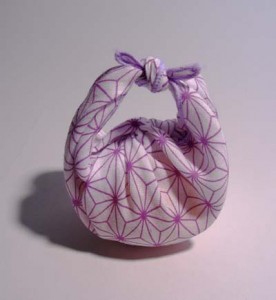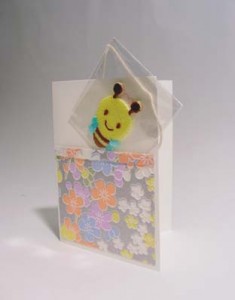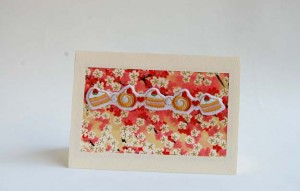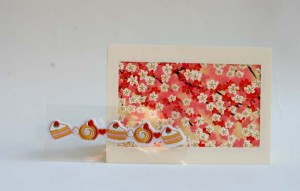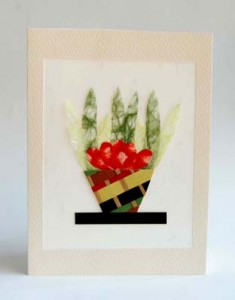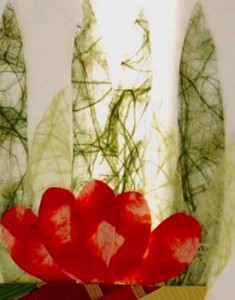Kirigami Sakura
As mentioned a couple of days ago, Kirigami is the Japanese art of paper cutting. I absolutely love creating pretty things from simple materials like scrap paper and would like to share a project that you can try at home.
Here are instructions to make a simple sakura (Japanese cherry blossom):
1 – Begin with a square piece of paper and fold diagonally to create a triangle.
Now, fold one bottom corner to the other and crease approximately 2cm to create a point of reference in the middle.
2 – Next, fold the bottom corners to the middle and crease approximately 2 cm.
* You should now have three evenly spaced creased along the bottom of the triangle.
3 – Take the left corner and fold it up to the top point (crease 2 cm) and unfold.
Now, take the same corner and fold it to the newly created middle crease.
Repeat the last step, using the top point of the triangle and folding it to the new middle crease.
* You should now see four even sections along the bottom and left-hand side
4 – Using the creases on the left-hand side, take the left bottom corner and fold it up to the top crease
(the fold should not surpass the bottom middle crease).
This time, press down along the entire fold to keep it in place.
5 – Next, take the right bottom corner and fold it to the left-hand side. Make sure it’s folded along the edge, also, not surpassing the middle crease (this should give you a clean point at the bottom).
6 – Taking the same corner from the previous step, fold it in half, taking the corner back to the right-hand side. Make sure the edges are parallel.
7 – Now, take the left side, fold over to the right, making sure to keep the edges parallel.
8 – Turn it over and draw a petal design. I chose a pointed petal design to create a sakura.
*Make sure to leave the left and right edges attached at some points in order to keep the entire image intact!
9 – Once the drawing is complete, cut it out and unfold it. You should have a lovely flower to decorate anything you like.
Try different styles to create a wide range of lovely designs.
This one I tried with a semi heart shape:
Once I cut it out, I thought it might look cheesy….
but to my surprise, it turned out different from what I imagined. The star in the middle adds a special touch.
Kirigami
Kirigami is the traditional Japanese name for the art of cutting paper, more specifically, decorative paper cutting.
I’m sure many have tried it at one point or another, perhaps while in elementary school when cutting out those simple snowflakes, or even a string of people holding hands.

Kirigami has become one of the more challenging forms of paper crafts, as some artists create intricate cut outs that may take several hours, or even days to complete.
There are many simple kirigami folding and cutting techniques that are great for beginners, and the finished products are lovely cut outs that can be hung in a window, framed as a wall hanging, used to decorate mirrors or stationery, or even to create beautiful mobiles.
The greatest part about kirigami is the fact that you don’t have to use special papers like traditional chiyogami or washi. You can even use magazines or old bits of paper that happen to be around the home.
Project Featured in Cut Out + Keep!
I’m happy to tell you that one of my eco projects is now featured on Cut Out + Keep and seems to be a fan favourite!
Check it out because the site is great too!
Benefits of Furoshiki
Furoshiki are traditional Japanese cloths that are used for a variety of things. They are most well known to be wrapping cloths that are the eco alternative to paper and plastic gift wrapping.
They were used from ancient times as a way to easily carry and transport objects and shopping. Over time, furoshiki became more popular for merchants to transport goods and others used them to decorate and wrap gifts for special occasions.
In Japan, they are not as popular as they once were, but you can still see some people using them to wrap their bento (for daily lunches or especially during picnic seasons) and use them as a placemat.
Overseas, furoshiki are becoming more and more popular as an eco alternative to plastic bags and other wasteful packaging.
There are dozens of different ways to tie furoshiki cloths, from wrapping gifts (boxes, bottles…), making handbags from them, grocery shopping carrier, and even clothing items (little tops, sash, bolero…) or accessories (hair, outfit, handbag…).
A fantastic video showing different furoshiki folds:
More than just a card
For those of you who have trouble finding little gifts for that person who seems to have everything, or even someone who loves cutesy things, there’s a simple solution: cards that are more than just a card.
You can find many different types of cards these days with slots to fit giftcards, cds/dvds, or even pictures, but why not get a card with a cute little gift they can use or display?
There are cards that have decorative pouches or pockets out front, so instead of the usual, try to give something different like a cute patch -they can be used to decorate anything imaginable and just a fun surprise to receive with a card.
These cards can also be reused and passed on from one friend to the other, so everytime they receive it, something different will be placed inside.
Other ones can have the patch as part of the card’s decoration, but once removed, the card itself can be used as a display.
If you would like to send something a little more artistic, try a card that can be displayed in a variety of ways.
By using translucent paper, some cards can be placed in a window so that the sunlight will pass through the paper and allow different colours to shine or create an outline of any images. The same effect can happen with the card placed safely near a tealight, where the warm light can create a fine glow through the paper.


